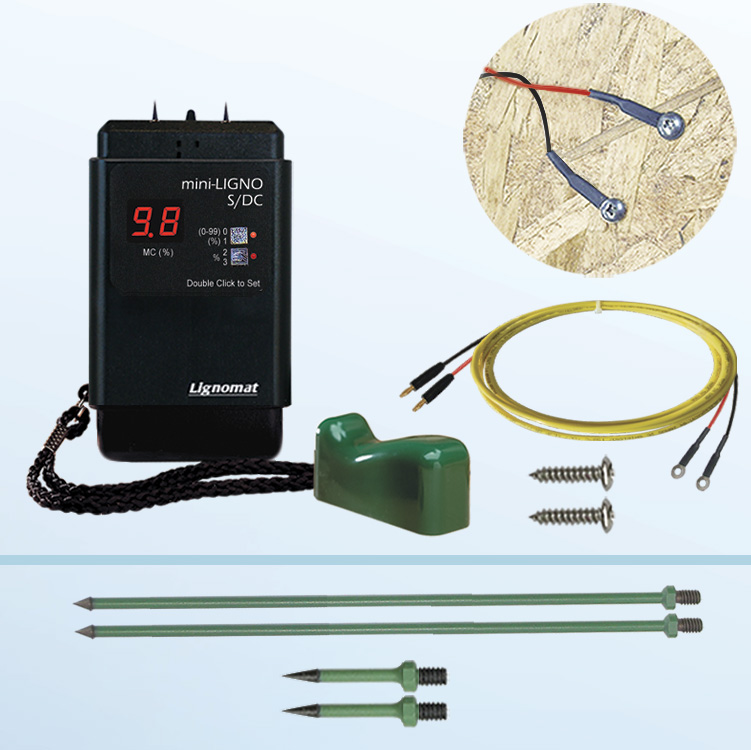How a Moisture Meter Can Improve Your Construction Jobs and Protect Against Damage
Wiki Article
The Ultimate Overview to Wetness Meters: A Comprehensive Summary and Exactly How They Can Conserve You Money
Dampness meters serve as crucial devices in discovering and monitoring moisture material in products, aiding in avoiding pricey damages and making certain the quality of products. Recognizing the subtleties of different kinds of wetness meters, their applications, and the potential cost-saving benefits they supply can be a game-changer for specialists and companies alike.Kinds of Dampness Meters
Different types of dampness meters are readily available for various applications in different industries. One typical type is the pin-type wetness meter, which measures the electrical resistance between two pins inserted into a material. This kind is ideal for timber, drywall, and various other structure materials. Pinless wetness meters, on the other hand, use electromagnetic sensor plates to scan a larger location without creating damage to the material's surface. Moisture Meter. These meters are ideal for rapidly examining wetness levels in big areas such as floors and wall surfaces.
In addition, there are likewise specialty moisture meters created for certain materials like soil, hay, or grain. These meters offer accurate wetness readings customized to the distinct buildings of the product being tested. Infrared dampness meters determine the thermal properties of a material to determine its moisture web content non-invasively, making them helpful for applications where pin or pinless meters might not be appropriate. Understanding the various types of wetness meters available can aid markets pick the most proper tool for their certain moisture measurement demands.

Advantages of Using Wetness Meters
Dampness meters supply invaluable benefits in properly assessing and keeping an eye on dampness levels in varied products and atmospheres (Moisture Meter). Among the key benefits of making use of moisture meters is the prevention of possible damages brought on by excess moisture. By finding and addressing high dampness levels beforehand, dampness meters help to avoid mold and mildew development, rot, and structural damage in buildings, saving both money and time on repair services. In addition, dampness meters help in ensuring the quality of materials during construction or manufacturing processes. By accurately determining wetness material, these devices assist preserve the stability of wood, drywall, concrete, and other materials, decreasing the risk of failures or defects.
Moreover, utilizing moisture meters can lead to raised power effectiveness. By identifying locations with high wetness degrees, such as leakages or bad insulation, adjustments can be made to enhance power conservation and minimize utility costs. In farming setups, wetness meters play a critical function in optimizing plant yields by enabling farmers to check dirt moisture degrees and make informed watering decisions. Generally, the benefits of making use of wetness meters span throughout various markets, providing affordable solutions and advertising better quality assurance practices.
How to Select the Right Dampness Meter
When choosing a moisture meter, it's essential to make sure that the meter is appropriate for the details product you will certainly be screening. Various materials have differing electric buildings that can influence moisture analyses, so picking a meter designed for your product is critical for precise results. By very carefully reviewing these variables, you can choose a dampness meter that fulfills your requirements and provides precise dampness measurements for your projects.Proper Methods for Dampness Meter Use

Price Financial Savings Through Moisture Meter Applications
Just how can the strategic use of wetness meters lead to substantial cost savings across numerous industries? In the farming sector, wetness meters aid in figuring out the optimal time for collecting crops, protecting against over-drying or excess wetness that can influence the last item's quality.
In a similar way, in building, moisture meters aid protect against costly damages by detecting wetness degrees in building products, such as wood or concrete, which can result in architectural issues if not attended to quickly. By identifying issue areas early, specialists can take restorative actions to prevent extensive repair work or replacements, eventually conserving time and cash.
Furthermore, in the food processing market, moisture meters are crucial for checking product quality and making sure conformity with safety and security laws. By accurately determining wetness web content in food products, producers can protect against perishing, maintain freshness, and decrease waste, leading to considerable expense financial savings. On the whole, the strategic application of moisture meters is a useful financial investment that can cause significant price decreases and boosted performance throughout different sectors.
Verdict
To conclude, moisture meters are valuable devices for measuring and detecting moisture levels in numerous products. By making use of the ideal wetness meter and complying with proper techniques, customers can effectively protect against pricey problems brought on by excess moisture. Spending Homepage in a top quality wetness meter can result in significant cost financial savings in the lengthy run by determining potential concerns beforehand and allowing prompt removal. Eventually, wetness meters are essential tools for preserving the integrity and long life of structures and materials.Moisture meters serve as crucial devices in identifying and keeping an eye on moisture material in materials, aiding in protecting against expensive damages and guaranteeing the top quality of products. Infrared dampness meters gauge the thermal homes of a product to determine its wetness web content non-invasively, making them helpful for applications where pin or pinless meters might not be ideal.Moisture meters offer very useful advantages in precisely keeping an eye on and analyzing moisture levels in diverse materials and settings. In farming settings, moisture meters play an important duty in maximizing crop yields by enabling farmers to monitor dirt moisture levels and make educated watering choices.In conclusion, wetness meters are beneficial devices for determining and finding wetness degrees in different materials.
Report this wiki page